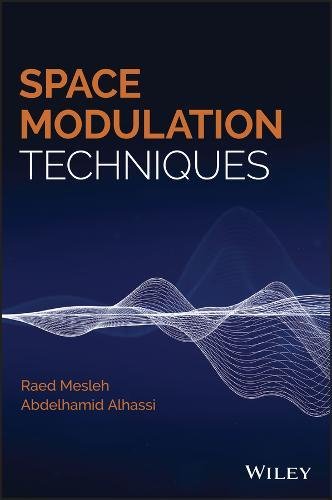

Most ebook files are in PDF format, so you can easily read them using various software such as Foxit Reader or directly on the Google Chrome browser.
Some ebook files are released by publishers in other formats such as .awz, .mobi, .epub, .fb2, etc. You may need to install specific software to read these formats on mobile/PC, such as Calibre.
Please read the tutorial at this link: https://ebookbell.com/faq
We offer FREE conversion to the popular formats you request; however, this may take some time. Therefore, right after payment, please email us, and we will try to provide the service as quickly as possible.
For some exceptional file formats or broken links (if any), please refrain from opening any disputes. Instead, email us first, and we will try to assist within a maximum of 6 hours.
EbookBell Team

4.4
32 reviewsExplores the fundamentals required to understand, analyze, and implement space modulation techniques (SMTs) in coherent and non-coherent radio frequency environments
This book focuses on the concept of space modulation techniques (SMTs), and covers those emerging high data rate wireless communication techniques. The book discusses the advantages and disadvantages of SMTs along with their performance. A general framework for analyzing the performance of SMTs is provided and used to detail their performance over several generalized fading channels. The book also addresses the transmitter design of these techniques with the optimum number of hardware components and the use of these techniques in cooperative and mm-Wave communications.
Beginning with an introduction to the subject and a brief history, Space Modulation Techniques goes on to offer chapters covering MIMO systems like spatial multiplexing and space-time coding. It then looks at channel models, such as Rayleigh, Rician, Nakagami-m, and other generalized distributions. A discussion of SMTs includes techniques like space shift keying (SSK), space-time shift keying (STSK), trellis coded spatial modulation (TCSM), spatial modulation (SM), generalized spatial modulation (GSM), quadrature spatial modulation (QSM), and more. The book also presents a non-coherent design for different SMTs, and a framework for SMTs’ performance analysis in different channel conditions and in the presence of channel imperfections, all that along with an information theoretic treatment of SMTs. Lastly, it provides performance comparisons, results, and MATLAB codes and offers readers practical implementation designs for SMTs. The book also:
Space Modulation Techniques is an ideal book for professional and academic readers that are active in the field of SMT MIMO systems.